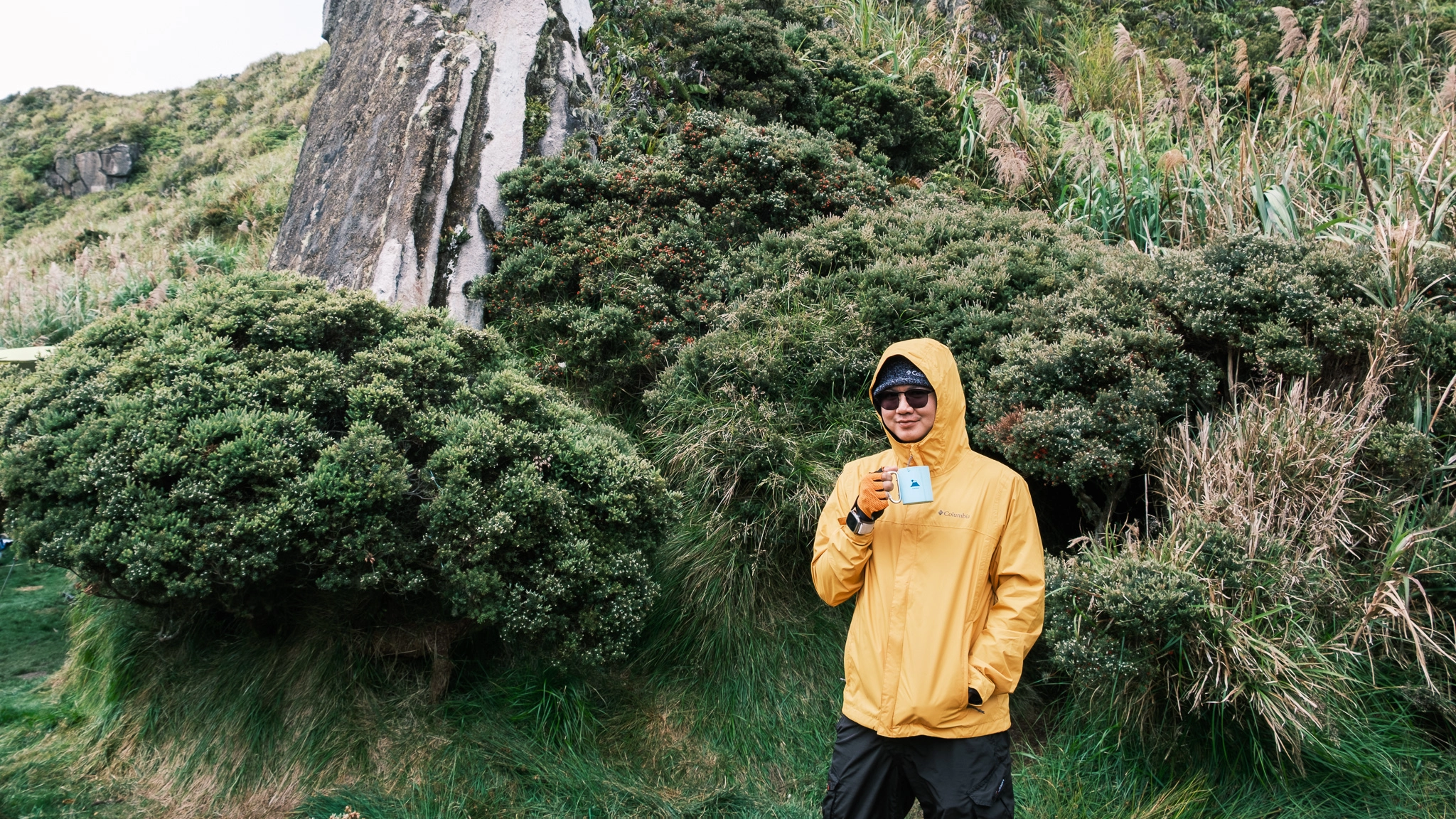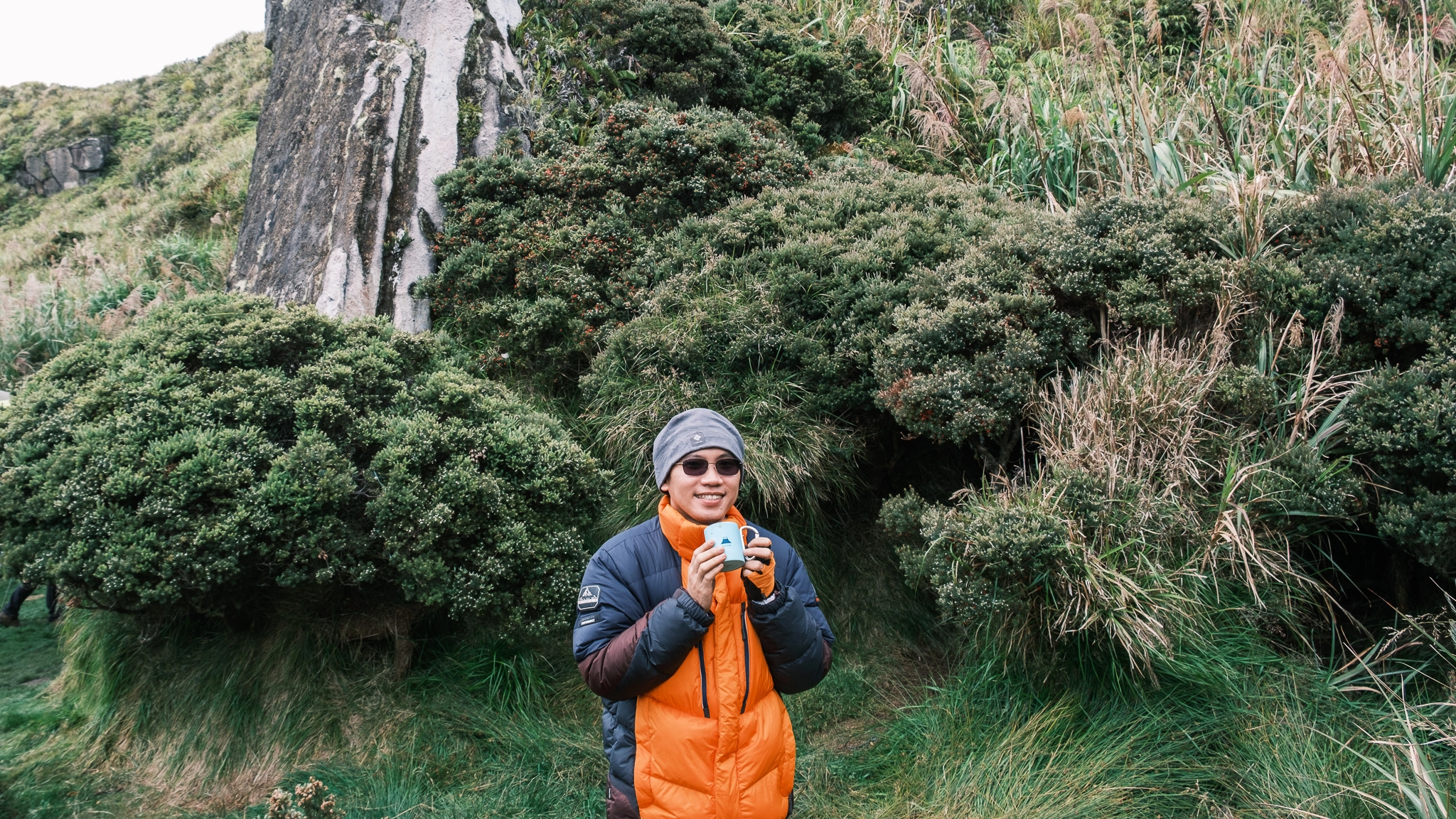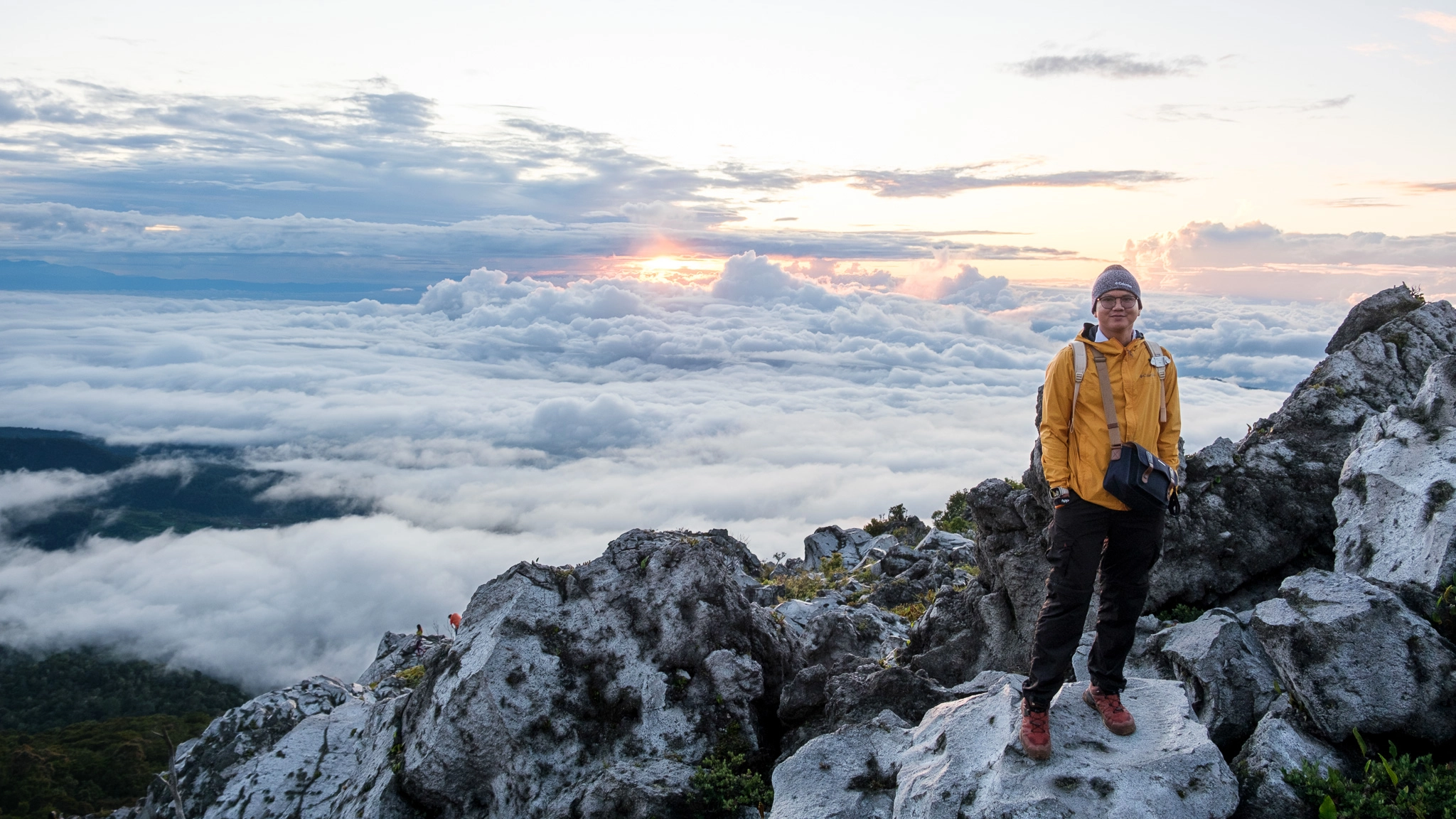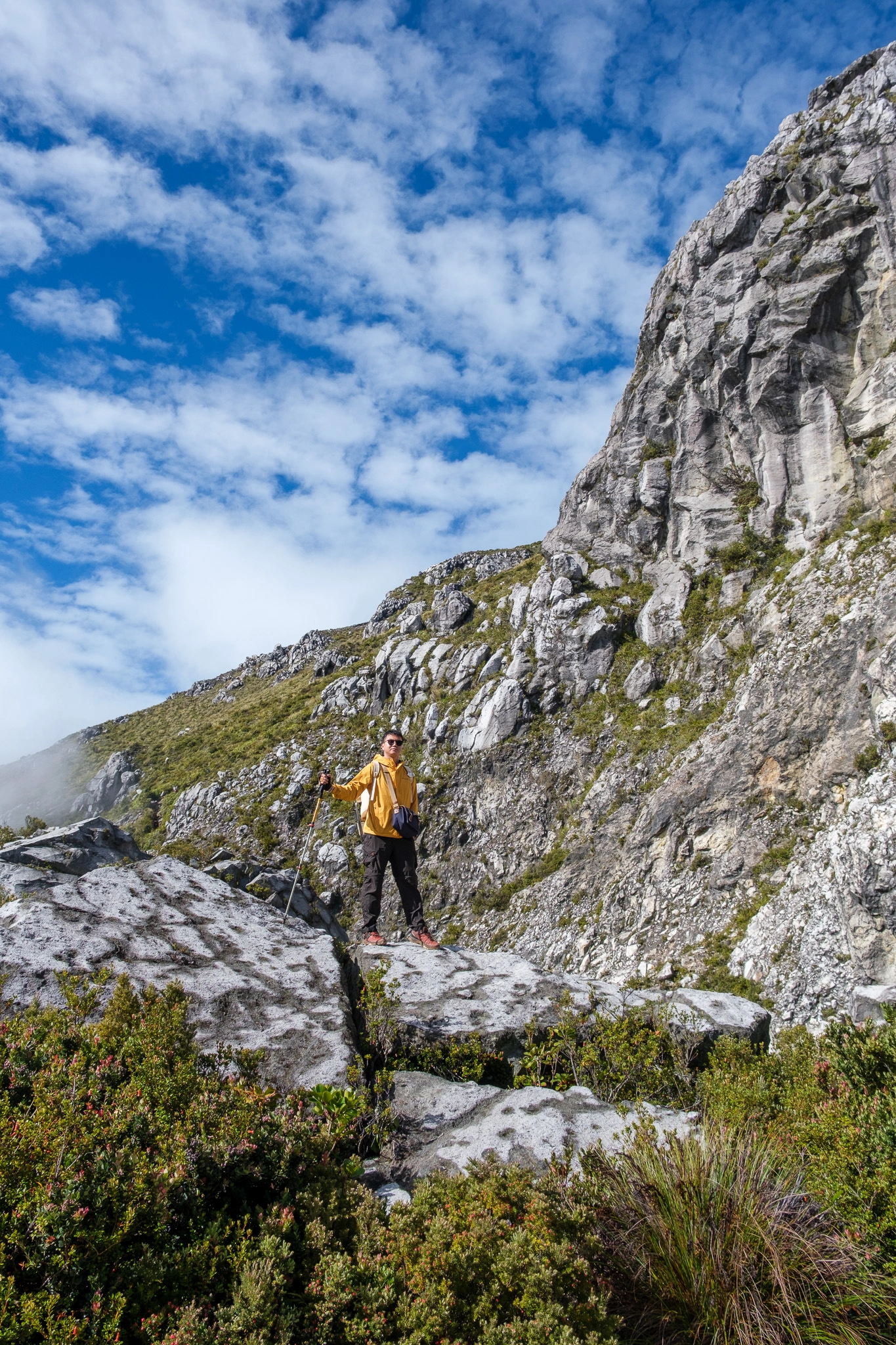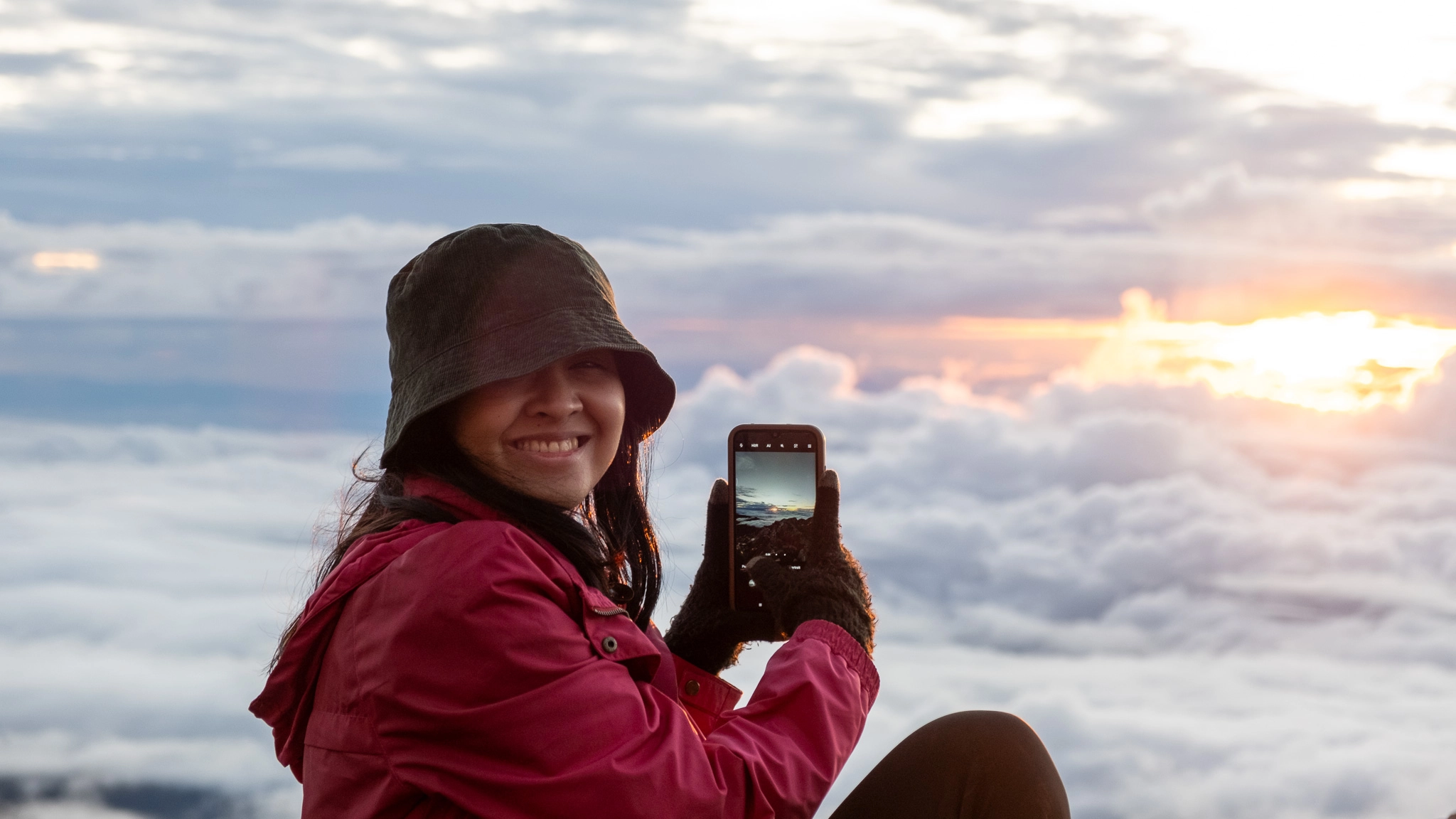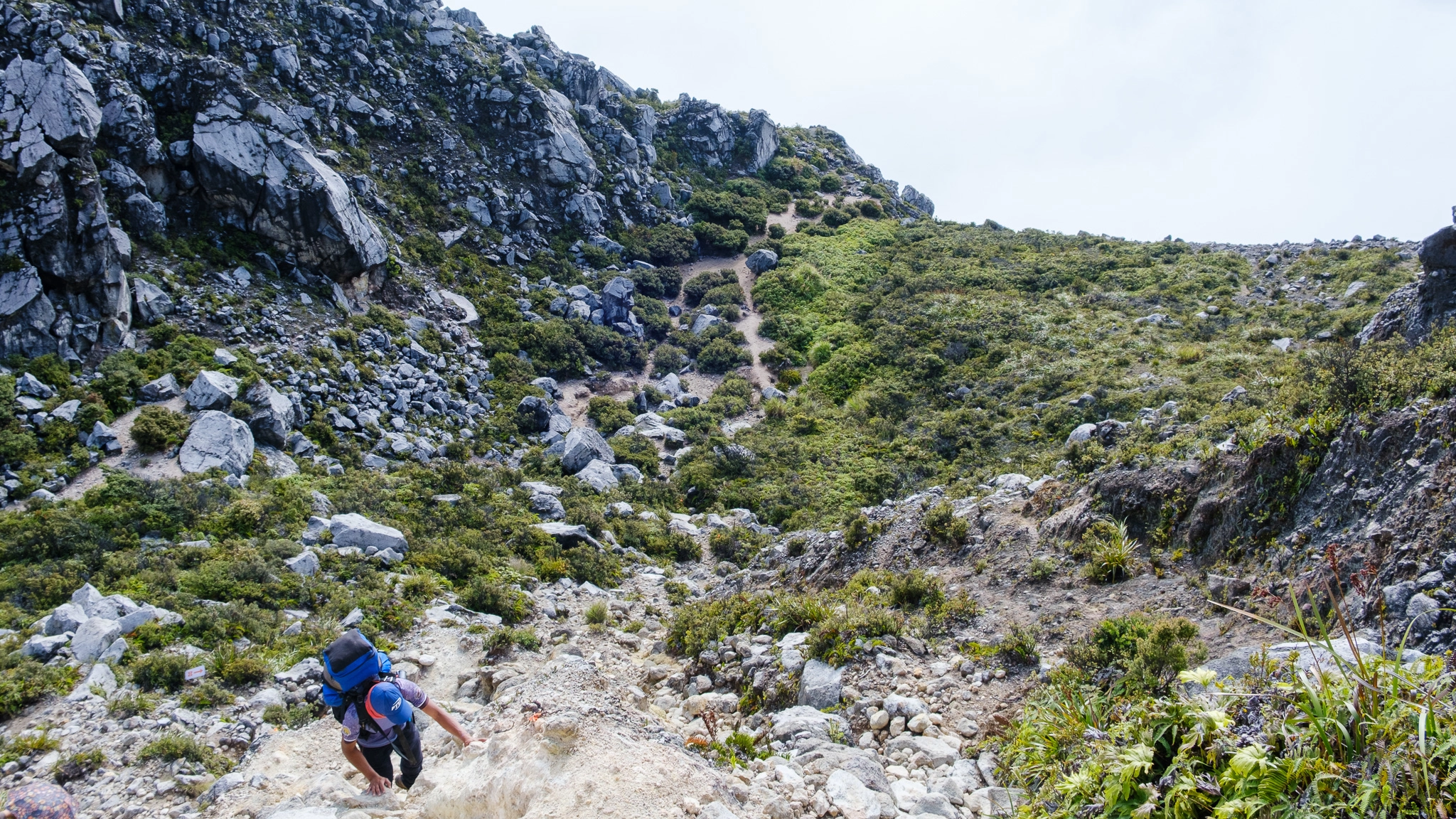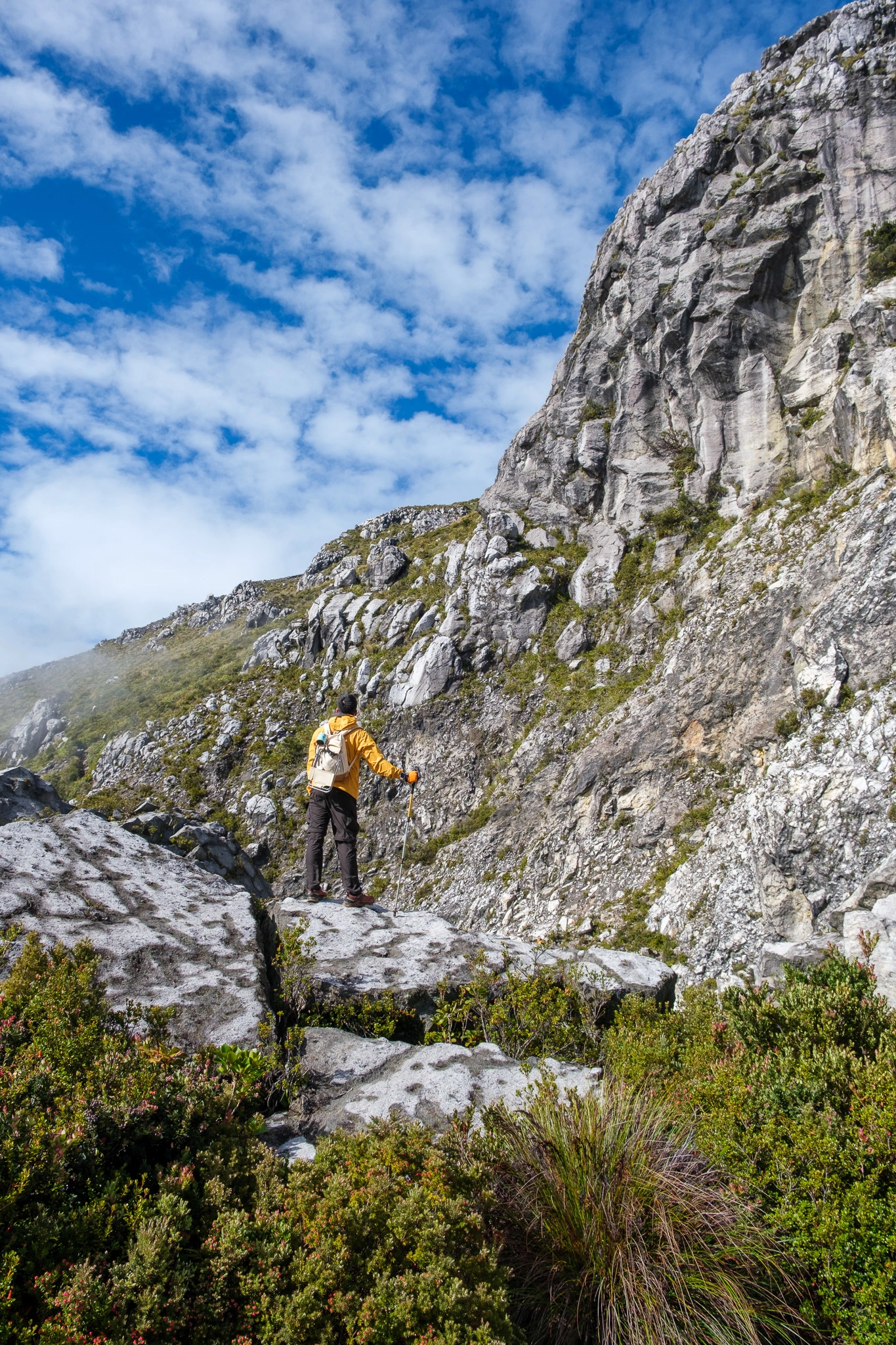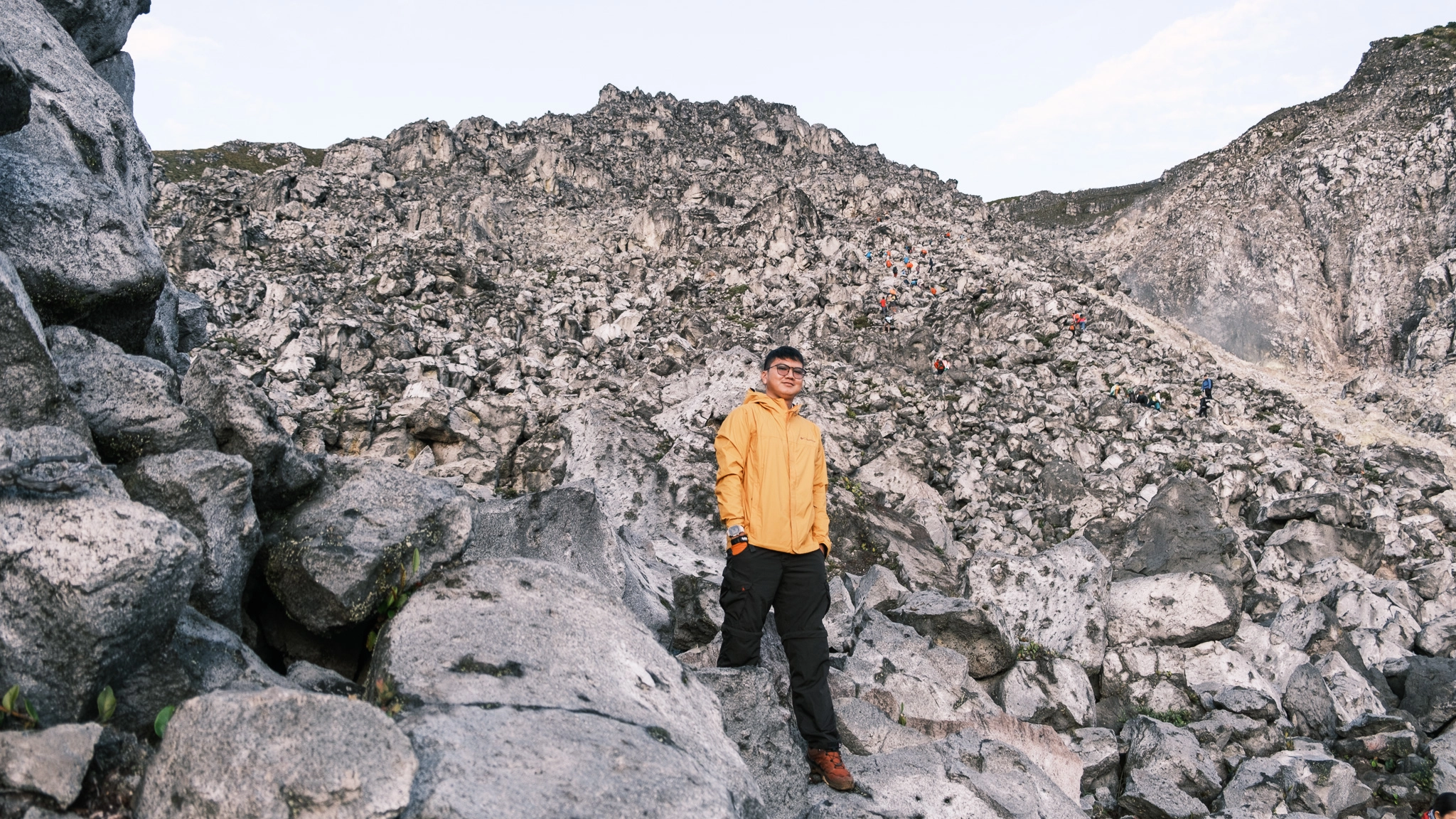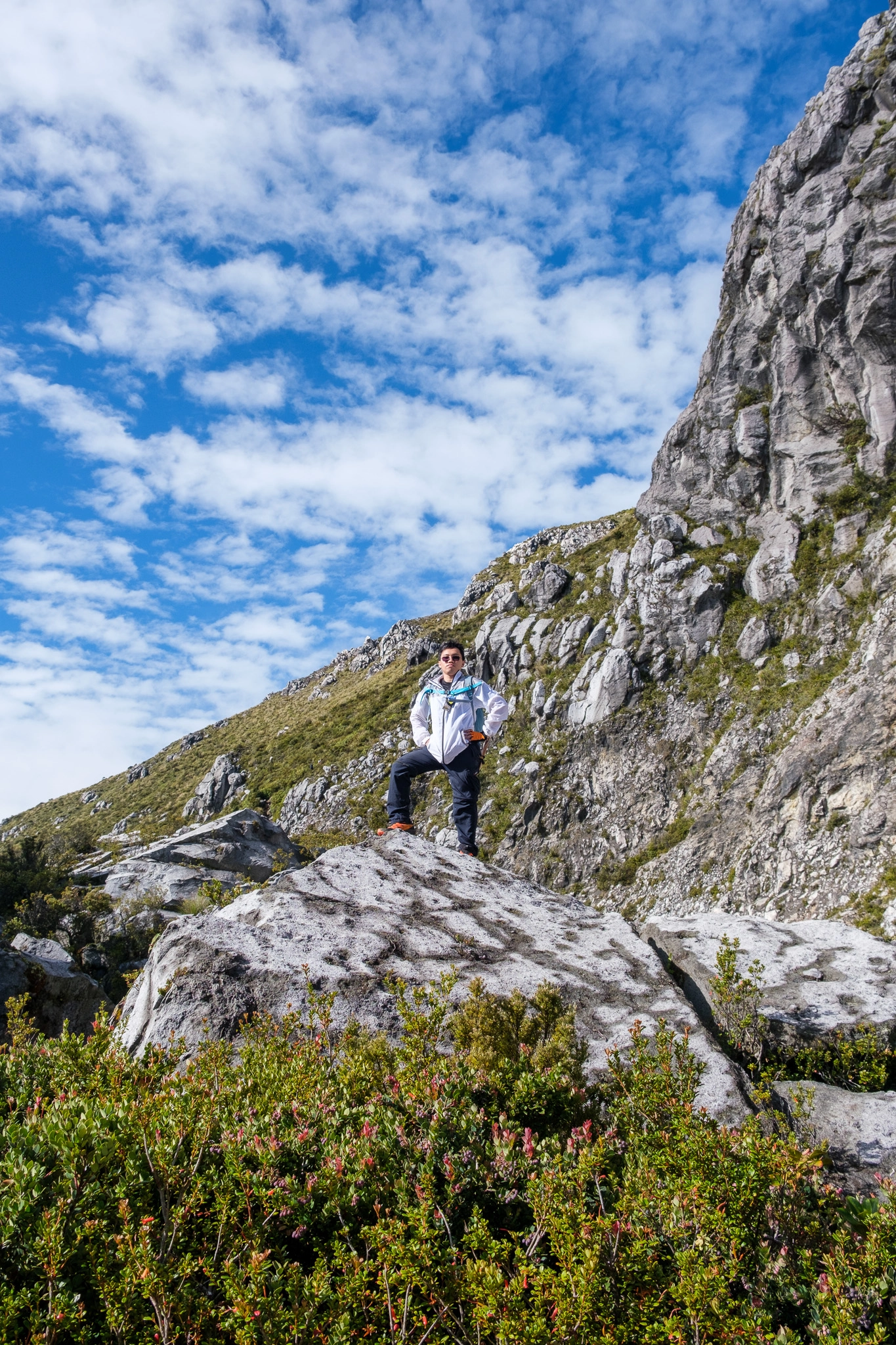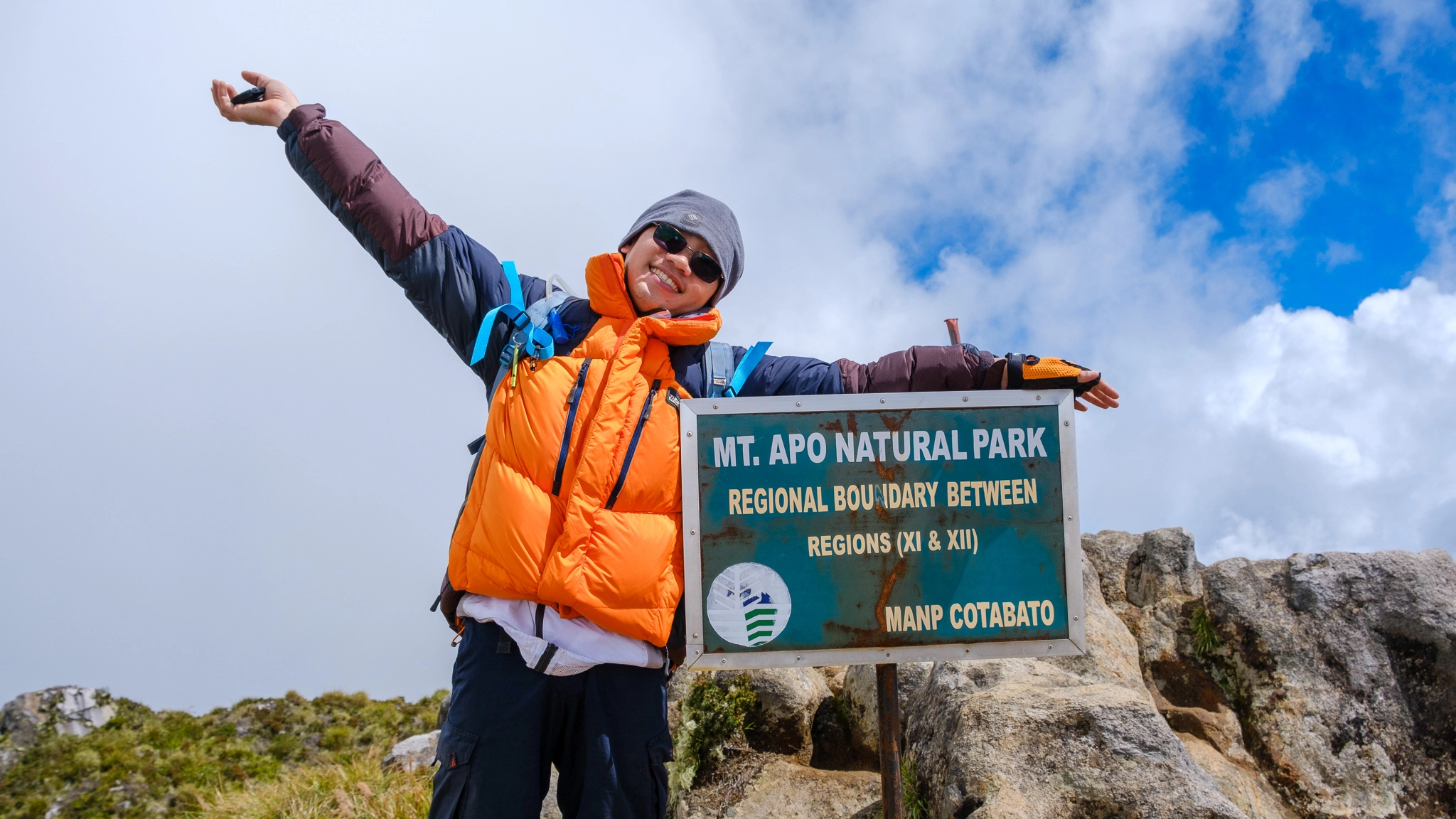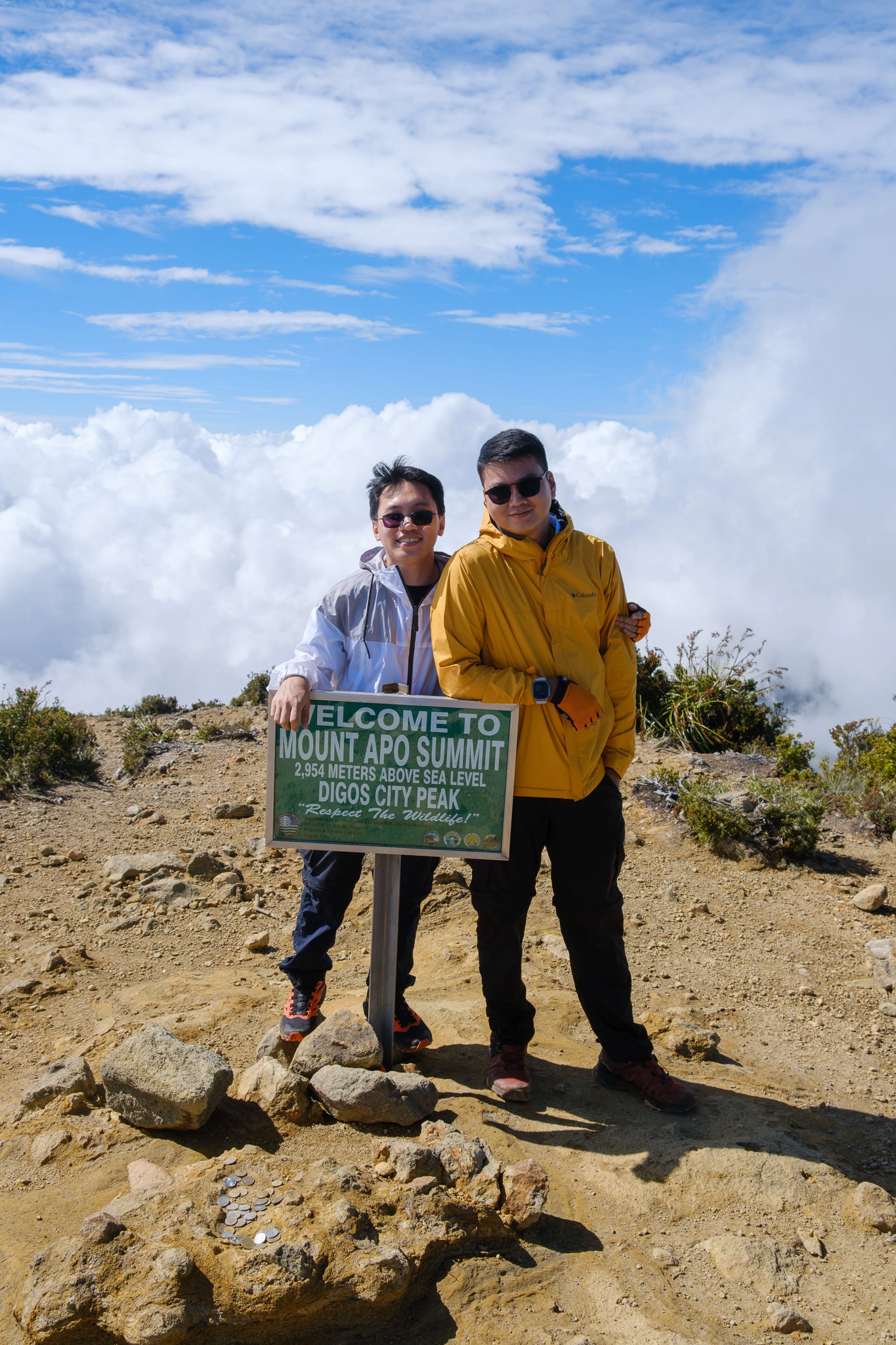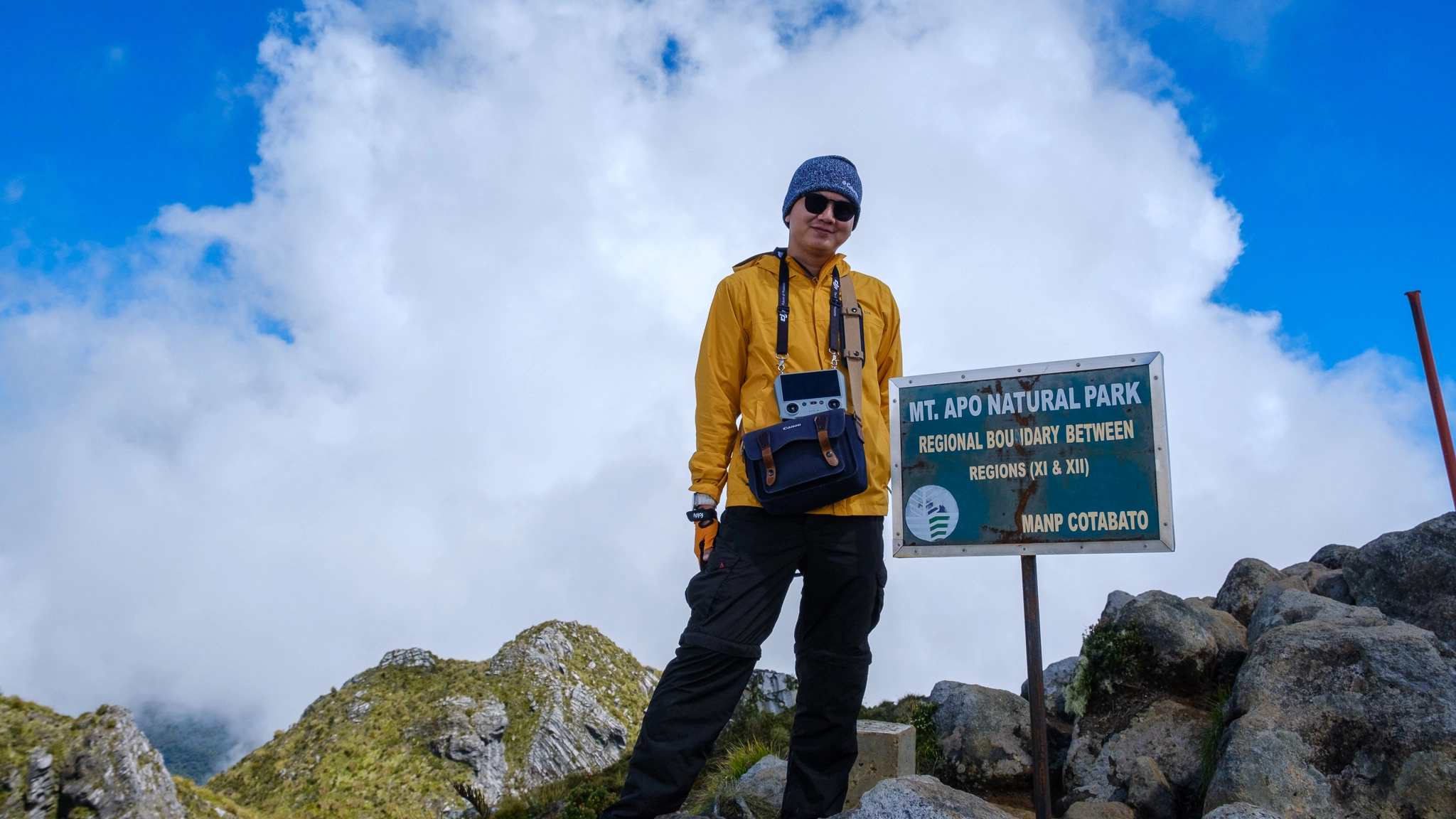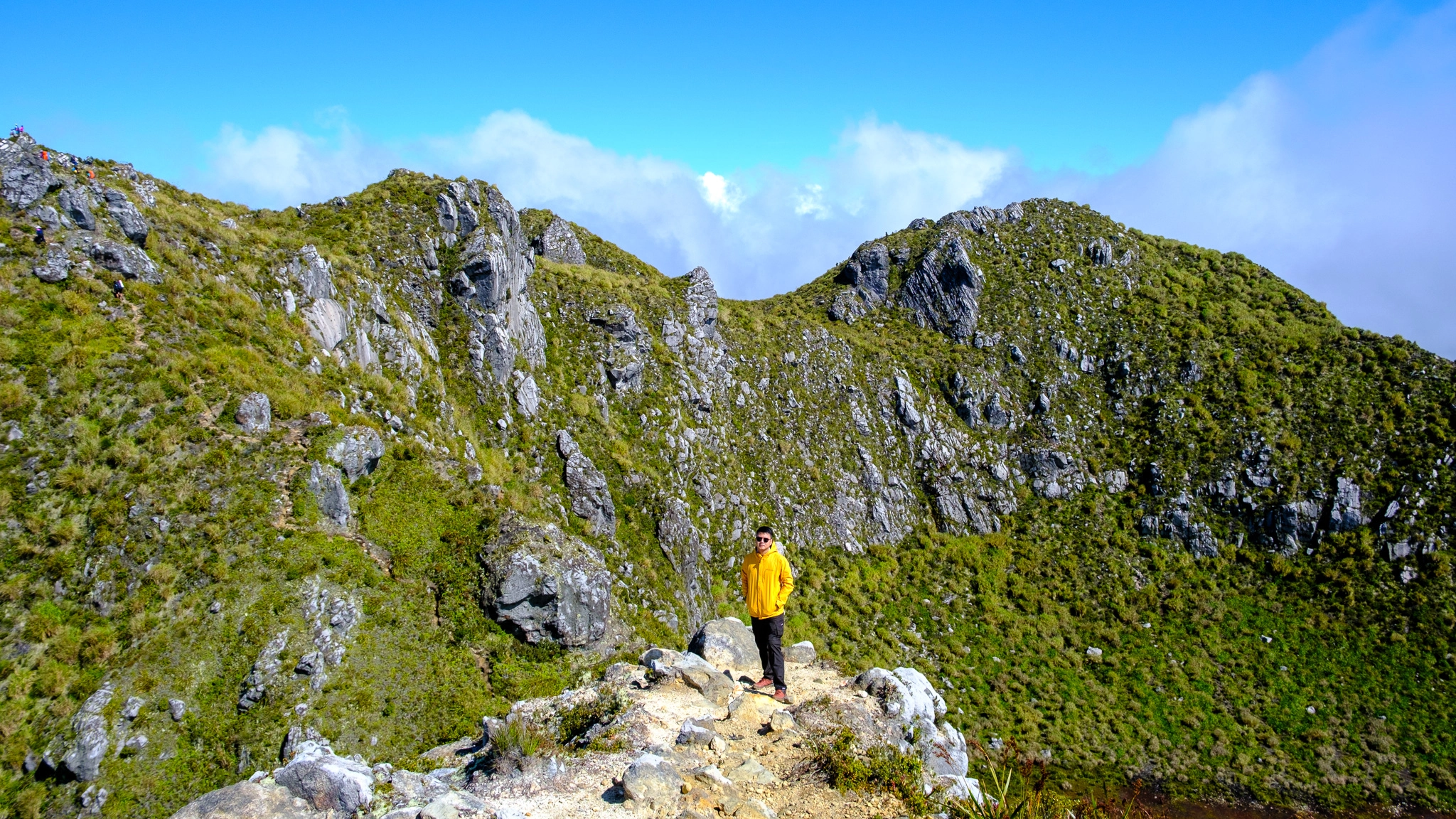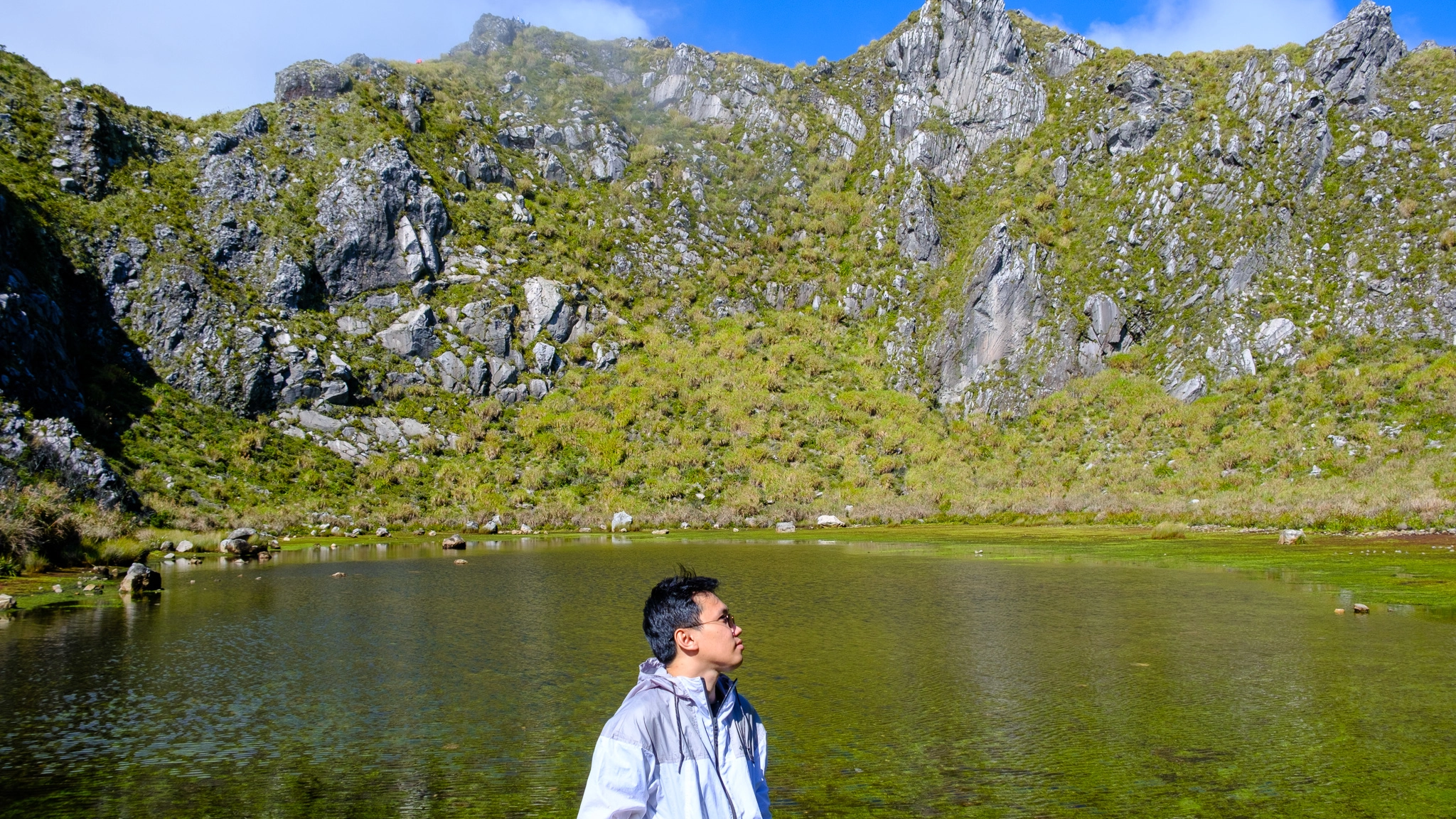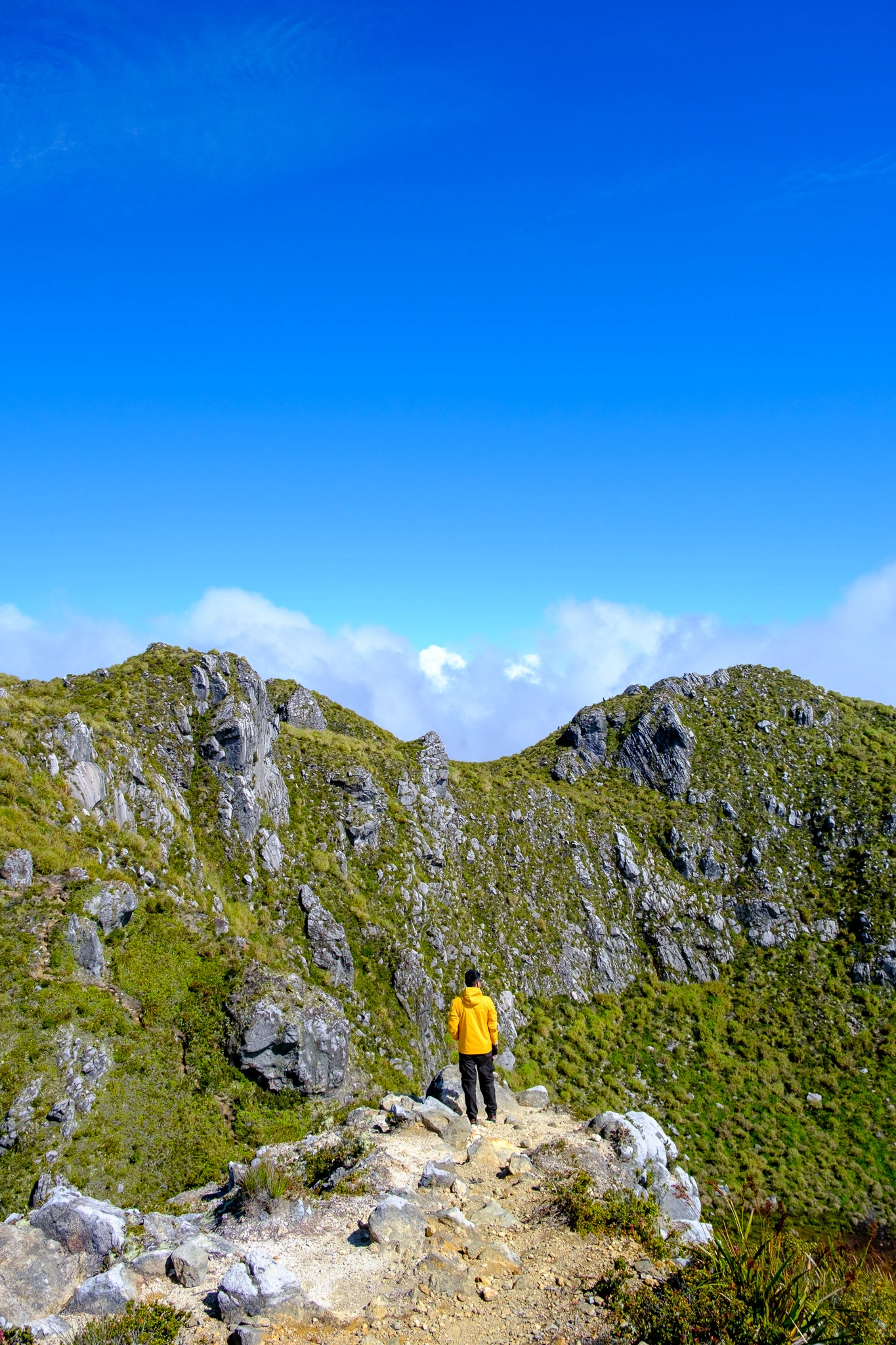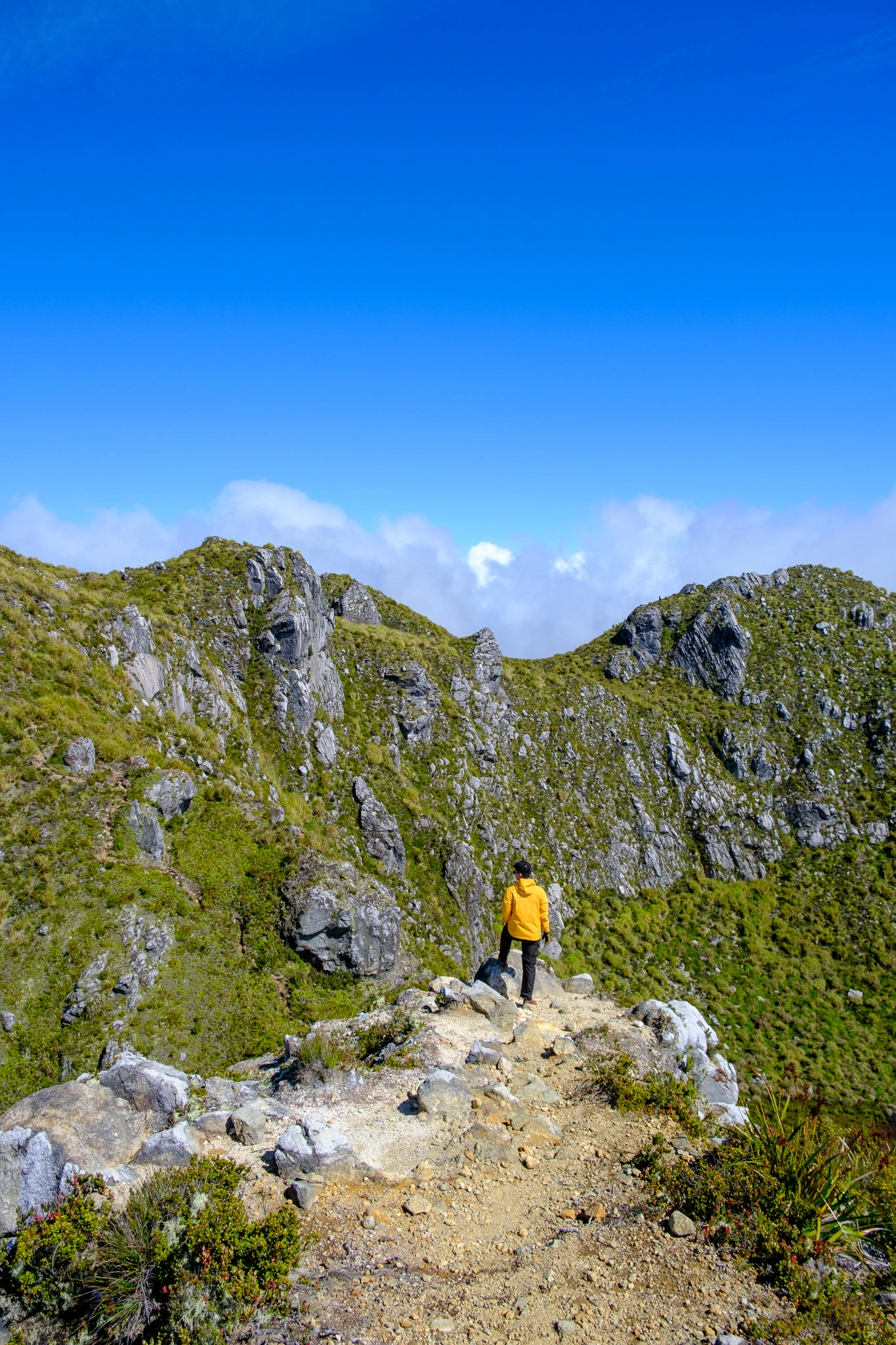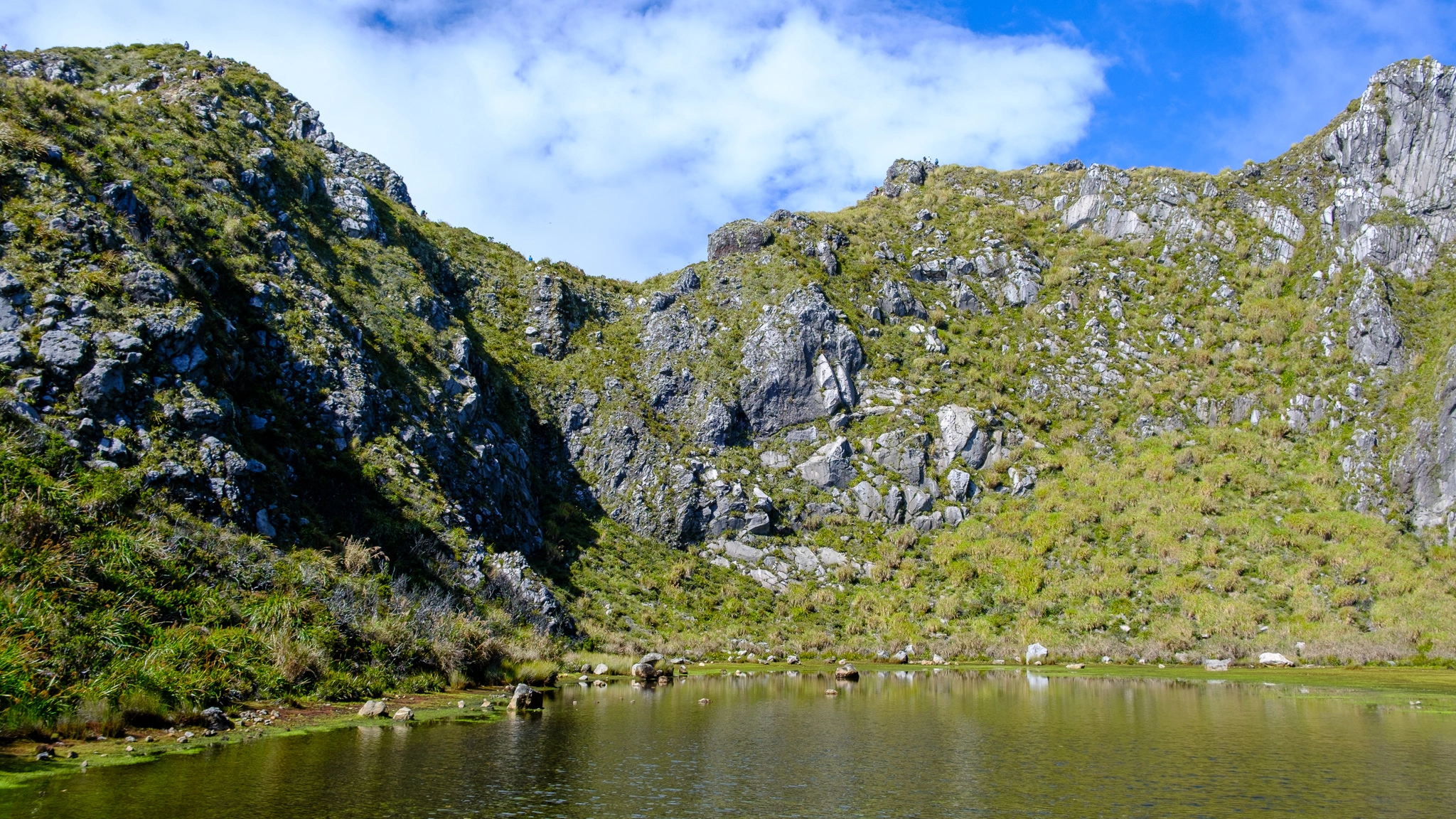Mt. Apo
Sta. Cruz Circuit Trail
About
Mount Apo, towers over the southern landscapes of the Philippines as the country’s highest peak. Home to diverse ecosystems, from rainforests to volcanic landscapes, it is a haven for those seeking to connect with nature with a slight challenge. As a protected national park, it also serves as a sanctuary for an array of endemic flora and fauna, making it a prime spot for eco-tourism and conservation efforts.
While there are several trails leading to the peak, the Sta. Cruz Circuit Trail to Mt. Apo is recommended for first-time hikers, since it features Lake Venado as one of its landmarks.
Whether you’re an avid hiker, a bird watcher, or simply someone who wants to conquer Philippines’ highest peak, this trail is perfect for you.
Features
DIFFICULTY LEVEL – 7/9
ELEVATION – 2954 MASL
DURATION – 3 DAYS
TRAIL TYPE – CIRCUIT TRAIL
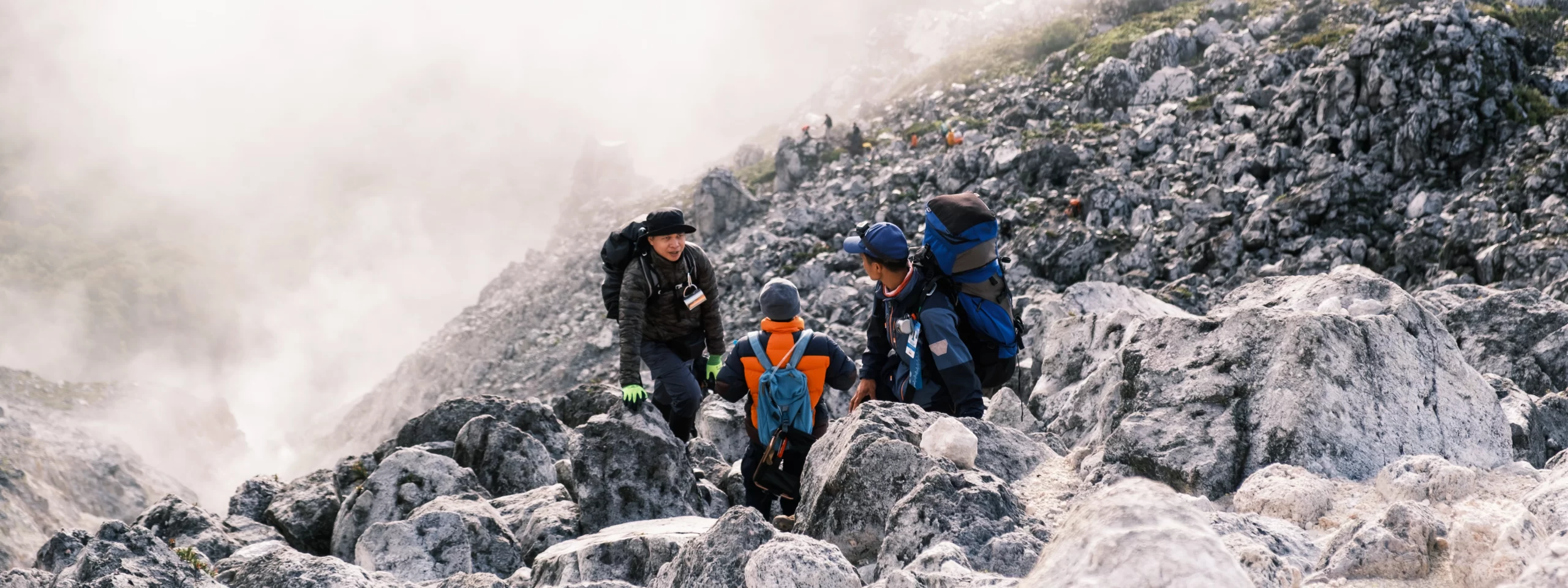
Preparation
To have a great hiking experience, it is important to have all the gear you need. Taking the possible weather into consideration, below a list of essential items that are needed to camp and hike at Mt. Apo via Sta. Cruz Trail.
Gear Checklist
- Tent
- Head Lamp with extra batteries
- Hiking gloves
- Trekking shoes and pants
- Sleeping bag
- Water bottle
- Rain jacket and/or windbreaker, down/puffer jacket
- Extra clothes (for 3 days)
- Slippers (for campsite)
- Sleeping pad or insulator
- Sleeping bag
- Bonnet
- Towel
- Eating utensils
- Lightweight mug (for coffee)
- Trail food
- Powerbank and charging cable
- Emergency blanket
- Umbrella or poncho
- Garbage bags
- Tissue (wet & paper)
- First aid kit
- Camping chair and table (optional)
- Trekking pole (optional)
This gear checklist is available to download with the Apple Reminders list:
Disclaimer: please do not rely solely on this list. Consider your preferences and add any necessary gears that might contribute to a safer and enjoyable experience. If you have suggestions, kindly send me a message through my socials.
Highlights
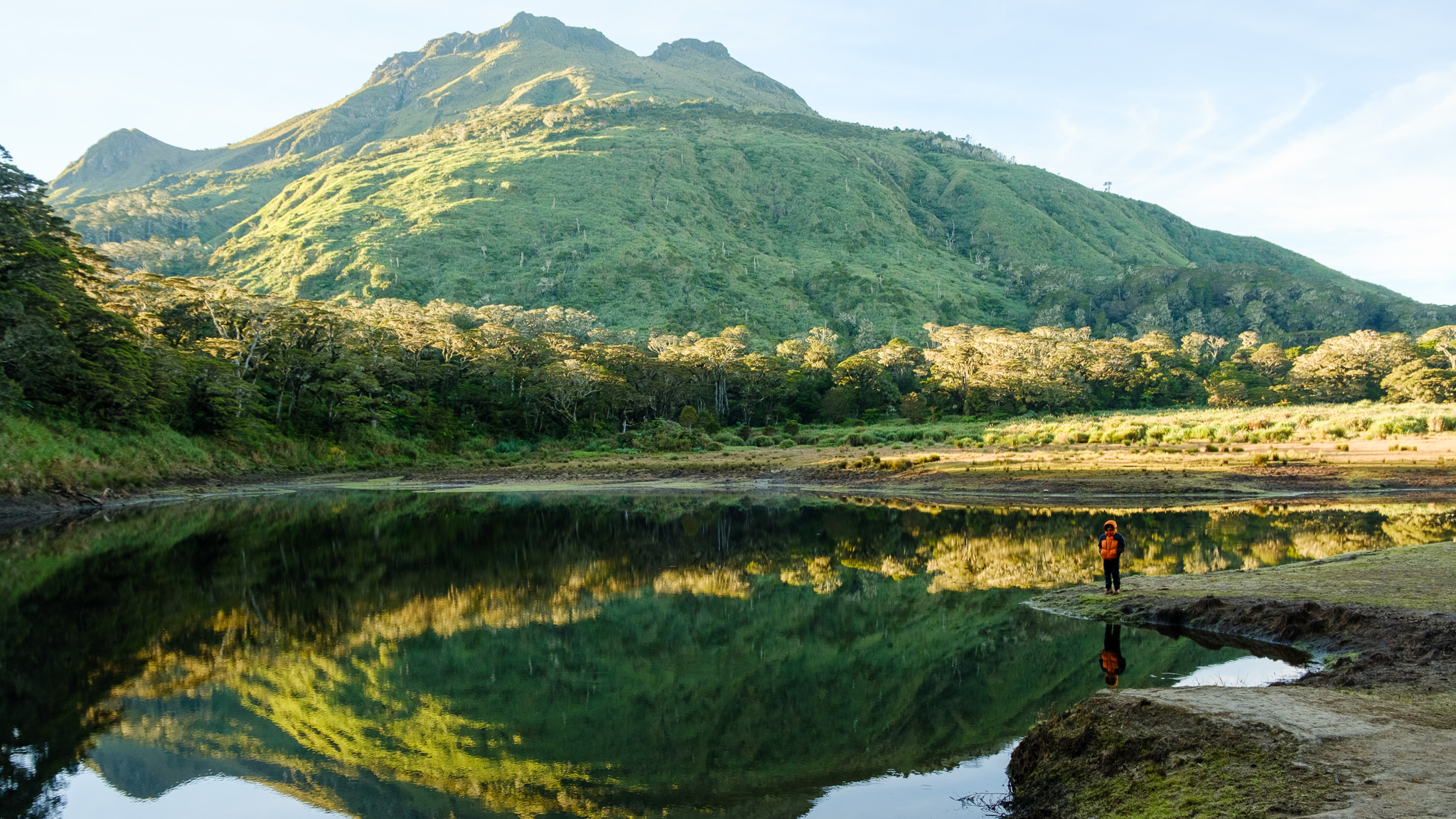
Lake Venado
This is the camp site on the 2nd day of the Sta. Cruz trail. Temperatures can get very cold here and this is where you’ll need a puffer jacket the most. In the morning, the sun rises and gives a clear reflection of Mt. Apo from the lake, just hope for a nice weather where there’s enough calm water on the lake and most importantly: a clear sky.
Saddle/Old Camp site
This camp site is similar to the one at Mt. Pulag, with the same kind of plants. Here, you can find a water source for drinking. This is where you’ll proceed after reaching the summit. Here you can take a rest and have lunch before going to Lake Venado.
The Boulder Face
The Boulder Face for me is the most unforgettable experience from the trail. Despite its challenging climb and sulfur vents, the view from this spot is spectacular, especially during sunrise.
Tip: Take it slow and let the sunrise catch you. The view here will invite you to pause and take a rest for a while before summiting. And trust me, it’s worth it.
The 3 Summits
Mt. Apo has three summits you should not miss: Digos Side, Mother Peak, and Kidapawan Side. It is said that among the 3, the Kidapawan peak has the best view.
Mt. Apo Crater Lake
After passing the boulders, you will ascend a high-elevation, narrow path. At the top, you’ll see the Mt. Apo crater. Here, you’ll notice a small body of water in the center which is the crater lake.
Safety
Trail
First-timers on the Sta. Cruz trail may encounter common challenges such as sprained muscles due to its challenging terrain. Thus, carrying supplies like painkillers, bandages, and ointments is essential.
My personal favorite aid during long hikes has been trekking poles. While they may appear unnecessary to some, they provide significant help, particularly for balance and reducing leg strain during longer hikes. Ensure you invest in lightweight, sturdy poles.
The Sta. Cruz trail consists of various types of terrain, but one in particular stands out: the Boulders Face. This notorious section is a highlight of the challenging hike, particularly the ascent from Tinikaran camp site to the peak. Not only does it feature sulfur vents that may require the use of face mask, but it also involves climbing large rocks. It is highly recommended to wear gloves for additional grip and to prevent injuries from heated or sharp rocks.
Weather Considerations
Due to the high elevation, camp sites and trails often have very cold temperatures. Therefore, it’s crucial to bring a puffer or down jacket, a lightweight jacket, warm gloves, and an emergency blanket. If you plan to reach the peak before sunrise, consider wearing or having a puffer jacket ready as the temperature at the peak can drop significantly during these hours. This is not to be underestimated, as there’s a risk of hikers developing hypothermia.
Lake Venado, where you’ll camp on your second night, is known for having the coldest evening temperatures. According to our guides, records indicate lows of 4°C.
It is also likely to rain, so make sure to bring raincoats/ponchos with you at all times. Ensure your backpack is secure with rain covers.
Navigation
The trail has marker ribbons of different colors, but it can get tricky. Therefore, it’s recommended to have a guide with you. On the third day during our return on our recent hike, we nearly took a wrong path because we didn’t have a guide with us. This was due to varying paces, making it hard for everyone to be accommodated. If possible, always try to stay with your guide/porter or within a group. If you’re unsure of which way to go at a fork in the path, consider calling for help, perhaps by using a whistle. Alternatively, if you’re ahead, you could wait for others to catch up. Usually, the last group is picked up by a sweeper guide.
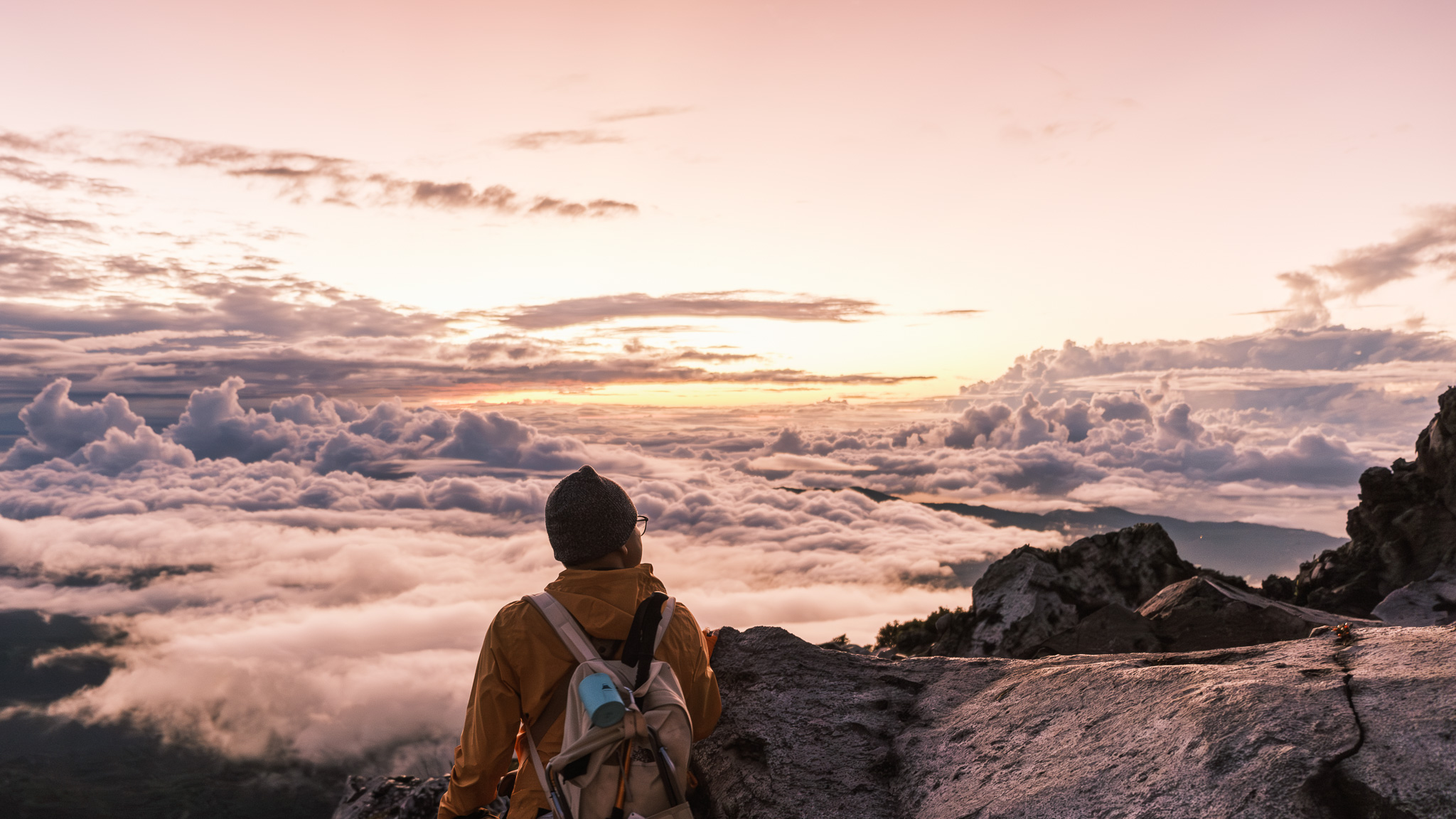
Frequently Asked Questions
Is there a comfort room available?
Yes, there are comfort rooms available at both Tinikaran camp site and at Lake Venado. There are no fees collected at these comfort rooms.
Are there available gears for rent at the camp site?
For these concerns, kindly coordinate with your organizers ahead in order to secure a safe hiking experience. There are no guarantees of gears available for rent.
Is there a potable water source?
Yes, there are water sources at Tinikaran camp site, Lake Venado, and saddle/old camp site.
Is food available in the camp site?
No, there are no vendors at the trail or in the camp site. It is a must to bring extra trail food for your porters as well.
Is electricity available at the camp site?
No, it is necessary to bring power banks and chargers when planning to hike and camp at Mt. Apo.
Things To Consider
Lengthy Trail
Depending on your pacing, the lengths of the trail here can get really long esp. the trail from Lake Venado back to the starting station. Be sure to pack light (or get a porter), bring enough trail food, and always coordinate with your guides when to bring food/water.
Dampened Ground of Tinikaran Camp Site
Many areas of the Tinikaran campsite are damp. There’s a concern that at this altitude, the temperature can drop significantly at night, causing the damp ground to become very cold. Additionally, consider choosing a level area for pitching your tent to ensure a comfortable sleep before your ascent to the summit. Make sure to not put your powerbank or phones on directly on the cold ground as it may drain faster than normal.
Challenging Terrain at The Boulders Face
People who have climbed Mt. Apo often mention the boulders face. Personally, I found this trail enjoyable. However, some hikers may hesitate to continue the summiting. This terrain can present challenges due to heated rocks and sulfur vents. The total distance from the Tinikaran campsite is approximately 4km, mostly comprised of climbing large rocks. During our recent hike, it took us about six hours to reach the first peak, including a breakfast break and several other breaks.
Personal Thoughts
Summiting Mt. Apo for the first time is a great milestone for a Filipino hiker as it stands the highest mountain in the Philippines. When I summited this mountain for the first time, I couldn’t help but get slightly emotional as I can finally say that I’ve come so far since the first time I ever hiked.
Summiting Mt. Apo is not that different from other mountains, it does have its own unique challenges and own allure. But with the right preparation and determination, I think everyone can climb this mountain at ease.

